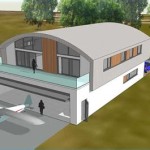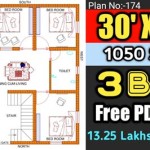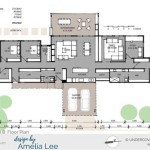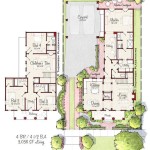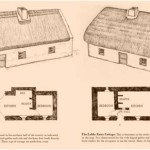Essential Aspects of a House Plan Image
House plan images provide valuable insights into the design, layout, and dimensions of a prospective home. To ensure that your house plan image effectively conveys the necessary information, consider the following essential aspects:
1. Floor Plan Accuracy and Detail
The floor plan image should accurately represent the dimensions and arrangement of rooms, hallways, and other spaces within the house. It should include measurements, wall thicknesses, and all relevant structural elements. Ensure the image is scaled correctly to provide a clear understanding of the home's size and layout.
2. Elevations and Exterior Views
Elevations provide vertical views of the house from different angles, showcasing its overall shape, rooflines, and exterior features. Include elevations from different sides of the house to provide a comprehensive perspective. Additionally, exterior views offer a glimpse of the home's curb appeal, landscaping, and surrounding environment.
3. Roof Plan and Section Details
The roof plan image depicts the layout and dimensions of the roof, including the type of roofing material, pitch, and any special features. Section details provide vertical cross-sections through the house, highlighting the roof structure, wall framing, and foundation. These details are crucial for understanding the home's structural integrity and design.
4. High-Quality Images
Ensure the images are high-resolution and clearly visible. This allows prospective homeowners to zoom in and examine specific details without losing clarity. Professional photography or computer-aided design (CAD) software can help produce crisp and accurate images.
5. Multiple Perspectives
Providing multiple perspectives of the house plan helps homeowners visualize the home from different angles. Include a floor plan with furniture layout, elevated views that showcase the relationship between different spaces, and 3D renderings that offer a more immersive experience.
6. Site Plan and Utility Information
A site plan image provides an overhead view of the property, indicating the house's orientation, driveway, and any landscaping features. Utility information should also be shown, including the location of electrical, plumbing, and HVAC systems.
7. Legends and Annotations
Include a legend that explains the symbols and abbreviations used in the house plan images. Annotations can provide additional information about specific features, such as material types, fixtures, or room purposes. These annotations enhance the clarity and usability of the images.
8. Accessibility and Sharing
Ensure that the house plan images are easily accessible and shareable with prospective homeowners and contractors. Consider using a digital platform or cloud-based storage system that allows for seamless collaboration and sharing of files.
By incorporating these essential aspects into your house plan images, you provide prospective homeowners with a comprehensive and informative representation of their future home. These images serve as a valuable tool for understanding the design, functionality, and visual appeal of the property, ultimately helping them make informed decisions about their dream home.
House Plans How To Design Your Home Plan

House Plans How To Design Your Home Plan

House Plans How To Design Your Home Plan

Floor Plans Types Symbols Examples

How To Draw A Floor Plan Live Home 3d

Where You Can Buy House Plans Live Home 3d

5 Small And Simple 2 Bedroom House Designs With Floor Plans Design Es Two

House Plans How To Design Your Home Plan

Simple 3 Room House Plan Pictures 4 Nethouseplans Building Plans Designs With Small Modern

Simple House Plans 3 Room Design Nethouseplans Small Blueprints Budget

